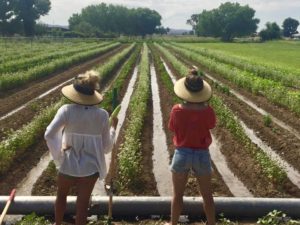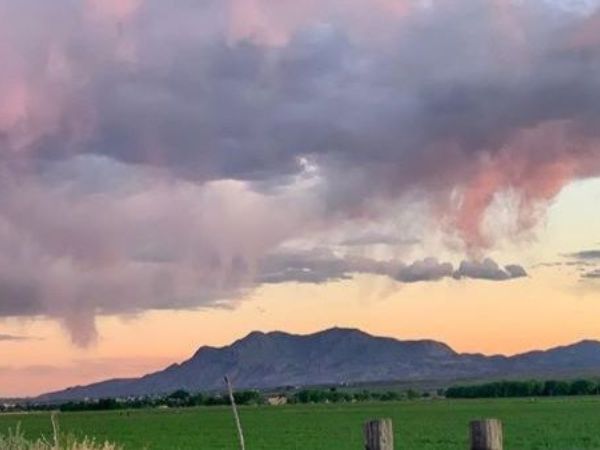June Membership Drive
Protecting Six Thousand Acres in the Middle Rio Grande
Following our annual board retreat in February 2020, the Rio Grande Agricultural Land Trust (RGALT) updated their Five-Year Strategic Plan. The overarching goal of the strategic plan calls for RGALT to protect six thousand irrigated farmland acres in the next decade. This goal came out of a consensus-building effort led by our advisory board member, Jeff Goebel, at our annual board retreat. Board members were asked to share why they were involved in RGALT and why our conservation work matters to the community. This brought out visions of a thriving, healthy ecosystem that supports people and wildlife. It also brought out both the board’s and staff’s powerful passion for protecting this tenuous landscape and the physical loss the community would experience if we stopped our conservation efforts. And it revealed the deep emotional loss we would experience if the lands we work to protect disappeared. Jeff ended the session by asking board members to imagine the impossible. “Could the impossible be our goal?” Board Treasurer, John Leeper, suggested the impossible might be to protect ten percent of the farmland within the Middle Rio Grande Conservancy District’s four-county service area, the same counties that RGALT shares as a focus area. This is how we came to the “impossible” goal of protecting six thousand acres of farmland in the middle Rio Grande (MRG) valley.
Protecting six thousand acres might not seem like a lot of land to protect over the next decade. Some land trusts focus on ranchland; they might protect six thousand acres with only one conservation easement. However, the majority of RGALT’s work focuses in the MRG valley, New Mexico’s most populated area, containing the state’s largest metropolitan area, Albuquerque. These MRG farms are the most threatened farms in New Mexico due to development pressure and the transfer of agricultural water rights to municipal and industrial uses. The MRG landscape encompasses the highest concentration of private lands on the floodplain, including 60,000 irrigated acres of farmland and over 20,000 acres of undeveloped riparian habitat stewarded by private landowners. There are thousands of private landowners in this corridor with farms ranging from a half-acre or smaller to a few hundred acres being some of the largest farms. Many of those landowners have inherited their land from their families who have been farming the land for generations. In fact, some landowners have had their land in the family dating back to the Spanish Land Grants. Many of these landowners are underserved and minority landowners. The majority of the landowners are land rich and cash poor making conservation easement funding essential to help landowners protect their land. Almost eighty percent of RGALT’s conservation easement projects have required that we seek conservation funding to help landowners protect their lands. Because of all these factors, achieving conservation easements in the MRG is a challenging, slow, arduous process that involves much tenacity both for RGALT and the landowners who patiently wait at the table while we seek conservation easement grant funding to help them.
Protecting six thousand acres of farmland will require outreach to thousands of landowners over the next decade. Protecting these lands will require RGALT to seek grant funding and write dozens, maybe hundreds of grant proposals for conservation easements and organizational capacity. And then there is the implementation of the conservation easement work for each project that can take one to two years to complete. Protecting these lands will require RGALT to gain increased organizational capacity to put boots on the ground, out in the community, and in the office. This is why another component of RGALT’s strategic goal is to increase organizational capacity funding in order to afford to hire three to four new employees in the next five years. Our current staff consisting of RGALT’s Executive Director and one part-time assistant cannot achieve this work without additional staff.
Most importantly RGALT cannot accomplish the “impossible” goal alone. It will require our conservation partners to share this same goal. It will take the MRG communities to share this goal. It will take each and every one of us supporting the effort.
The Rio Grande is our lifeblood, the farms make up our local foodshed, the riparian habitat is New Mexico’s largest contiguous riparian corridor. The river, the farms, and the riparian habitat provide a critical link for over 400 species of bird in the Central Flyways’ migratory bird corridor to journey from Canada to South America. All of it will fast slip away right before our eyes if we do nothing.
Today is the day to decide what the landscape we want to live in will look like. Today is the day we decide the landscape we want to leave behind for our children, for the future. It will be gone before we realize if we wait until tomorrow.
Your support matters. TOGETHER, we can protect six thousand acres of MRG farmland in the next decade.
RGALT MEMBERSHIP GOALS
Increase Community Support! Please click the ‘Donate’ button below to provide any amount you are able to contribute to help us in protecting agricultural land and water in the middle Rio Grande’s urban and rural communities
Make a One-Time Donation Today here!

“Irrigators lean against their shovels and gaze westward across textured croplands, wrinkled rows in soil shadowed by clods, certain their reality is sufficient.”
~ Gerald Haslam
New Mexico could gain economically by building soil health and feeding its own people

A new study of New Mexico’s agriculture and food economy prompts key state policy recommendations from the NM Healthy Soil Working Group. In Response, the Working Group released Policy Recommendations for consideration now and for the 2021 Legislative Session. Prepared by the non-profit Crossroads Resource Center and based on publicly available data, the 46-page New Mexico Farm & Food Economy assembles statewide data on agricultural income, production expenses and information on food-related sectors, personal income, and health. The report found that over the last 50 years NM farmers spent $14 billion more on animal feed than they sold, and $10 billion buying agrochemicals, petroleum products and agricultural inputs sourced out of state each year. Due to these ever increasing costs, there has been no gain in net cash income for farmers over the last 50 years. Building soil health is an opportunity for farmers and ranchers to gain independence from costly inputs and become prosperous again.
Policy recommendations from the NM Healthy Soil Working Group have 5 major goals:
● Advance public health and food security in response to COVID 19 and for long-term;
● Create prosperity and jobs in agriculture, spurring local economic development;
● Honor farmers and ranchers and their adoption of healthy soil principles;
● Develop greater water retention, climate leadership and ecological well being;
● Embrace social equity, including by engaging diverse and frontline communities in
policymaking, to achieve the vast multicultural potential of the Land of Enchantment.
RGALT’s Spring/Summer 2020 Print Newsletter is out!
Read the entire newsletter here!

Did you know you can support the Rio Grande Agricultural Land Trust through shopping on Amazon? Simply go to https://smile.amazon.com and select Rio Grande Agricultural Land Trust as the non-profit you want to support. Then, anytime you shop on https://smile.amazon.com, 0.5% of your total purchase will be donated to the Rio Grande Agricultural Land Trust! We thank you in advance and happy shopping!
Donate to the Rio Grande Agricultural Land Trust with Amazon Smile here!

We protect land and water for people and wildlife in the Middle Rio Grande Valley of New Mexico, forever.


